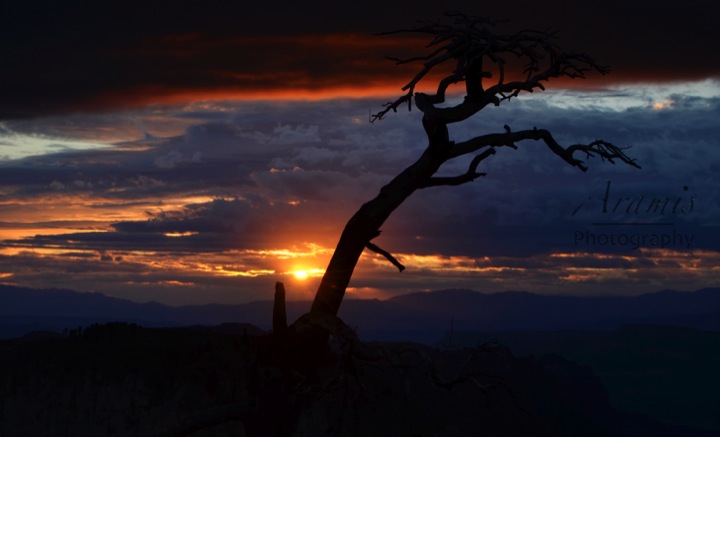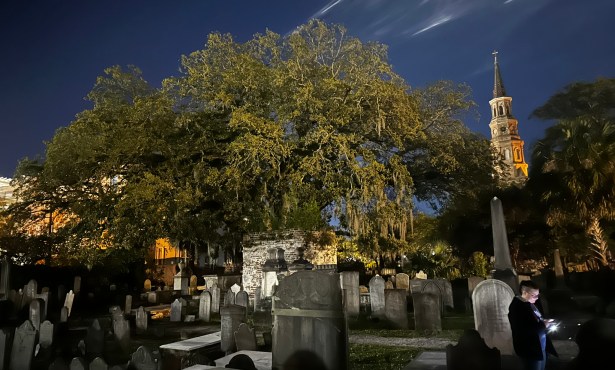Nature, Version 2012
Year of Backpacking Trips to the Sierras
Last year, 2012, was my year of backpacking. Returning from my fourth trip to Europe in five years and flying over the Sierra Nevada mountains, I realized that I should stay a bit closer to home for a while. I needed to explore the wealth of the West before gallivanting off to more far-flung locations.
So I went on four backpacking trips in 2012, three to Yosemite National Park and one to Zion National Park in Utah. Two of these trips were with friends, and two were solo. I enjoy hiking and camping by myself and sometimes seek it out actively, but generally speaking, as with most activities, it’s more fun to share experiences with others. Another major inspiration for my trips was my newfound interest in photography. I’ve dabbled for years (who hasn’t nowadays) in photography but started getting a little more serious after getting a new Nikon.

Yosemite and Zion are so beautiful that they sometimes seem to be overlooked, the way an obviously beautiful woman may be overlooked by hipster types seeking a less accessible kind of beauty. I’m still awed by the beauty of these parks and shall continue to seek them out for years to come before their beauty wears thin with me.
My first trip to Yosemite, in August, was a warm-up trip. I hadn’t been to Yosemite in decades and had never really explored it well. I felt, upon gazing upon Yosemite from the famous Tunnel View, just as LaFayette Bunnell did – the first Westerner to gaze upon this seemingly preternatural beauty:
None but those who have visited this most wonderful valley can even imagine the feelings with which I looked upon the view that was there presented. The grandeur of the scene was but softened by the haze that hung over the valley — light as gossamer — and by the clouds that partially dimmed the higher cliffs and mountains. This obscurity of vision but increased the awe with which I beheld it, and as I looked, a peculiar exalted sensation seemed to fill my whole being, and I found my eyes in tears with emotion.
On this first trip I scouted out a couple of locations for more serious hiking and backpacking and camped out near Nevada Fall. I got my first blisters in years and realized that Vaseline would have been really helpful to stop my thighs from chafing, and chapstick would have done my lips a similar favor.
My second trip was more of an adventure. I convinced two of my friends to join me on a hike up Tenaya Canyon – the one area marked on the map as “strongly discouraged” – to Cloud’s Rest, the highest point in the valley area. I discovered after visiting this area in real life that Google Earth can be a bit deceptive regarding actual terrain. What was supposed to be a day-and-a-half, up-and-back overnighter ended up becoming two and a half days and required hitchhiking to get back to civilization. The trip was epic, we survived, and my friend Diana swore to never join me again on a backpacking trip if I was the planner.

Trip number three, in November, took us out of state, to my first love: Zion. While Yosemite’s gray granite beauty suggests permanence and solidity, Zion’s red rock sandstone and water-carved canyons suggests a more fragile beauty. Late fall light only enhanced this feeling, and I realized from this trip that cold weather should be a bonus, not a deterrent, to backpacking.
Adventure beckoned again, with my friend Cameron reprising his role in our Yosemite adventure and my longtime “heterosexual life partner” (as a mutual friend of ours designated him) Justin also joining us this time. I planned the Zion adventure, too, and got as much flack from my buddies as I had for the Yosemite planning. But my brand of adventure requires some seat-of-the-pants navigation or it wouldn’t be adventure.
We hiked up about 5,000 feet, past Angel’s Landing, to Horse Pasture Plateau and the West Rim. The view isn’t quite as breathtaking as that first glimpse of Yosemite Valley, but it’s a close second.

We found a secret down-rappel location from the West Rim and discovered that we could indeed rappel down into Phantom Valley – if we had a different route back out of the valley, or two ropes. We had only one rope and didn’t have the time to hike out of the valley to the west. So we rappelled and scrambled down as far as we could with one rope, chalked it up as a scouting expedition, and vowed to return in the spring.
We camped out on Horse Pasture Plateau, with the three of us sharing my two-person tent. Staggering head to feet to head did the trick. The extra warmth was worth the cramped conditions. We woke at dawn and got warm without anything hot because someone, who shall remain unnamed, had left the gas valve on the stove open the night before.
We broke for lunch at the trailhead for Angel’s Landing and took a quick, but scary, jaunt out to the end of the landing. I swear this is the most dangerous public park trail in the country. Sheer cliffs, sometimes on both sides, are frequent, and one little slip could – and does about once a year – literally end what would otherwise have been a really good day, for good.
Epic adventure number two: completed.
Having acquired a taste for winter, I decided to tackle Yosemite in the cold months and to photograph her beauty in a very different mood. I couldn’t convince anyone to join me on this trip, so solo I went. I bought snowshoes and some good cold weather gear. I even bought real hiking boots, dispensing with my customary running shoes.
My target this time was Mount Starr King. The name alone required that I visit it. This peak is south of Half Dome and a bit higher, at 9,092 feet. It has an accompanying lake: Starr King Lake. My plan was to hike up the John Muir Trail to Little Yosemite Valley and then strike cross-country, in snowshoes, to Starr King Lake, camp out at the lake in the snow, and attempt to climb Mount Starr King.
None of that happened.
Well, most of none of that happened. I did hike up the John Muir Trail to Little Yosemite Valley, but that’s about as far as I got. I actually went a couple of miles further, to Moraine Fall, and camped out there. There wasn’t any snow to speak of, even in Little Yosemite Valley, and I forgot a pretty key fact: Streams and rivers get a lot bigger in winter from rain and snow melt. So I couldn’t cross over the stream for a long while, and yet again Google Earth fooled me into thinking the slopes up to Starr King Lake are more gentle than they are in real life.

After hiking almost six hours with a full backpack, I decided to abandon my original plan, make camp, and scramble around some of the Moraine Dome area. Setting up camp I realized that my water bottle had leaked all over my sleeping bag. This was unfortunate since it was about 45 degrees in early afternoon and I was anticipating a very cold night. Somehow, not only had the water leaked only on my sleeping bag, but it had leaked into the hood of my sleeping bag, probably the worst place it could have leaked. I set up my tent and left my sleeping bag on a rock to dry in the sun while I did some rock scrambling on the slopes around the campsite.
I returned two hours later, with evening already falling around four-thirty and a still-very-wet sleeping bag. Luckily, I had brought plenty of fire-starting stuff. Well, not luckily. I had actually planned ahead. Unfortunately, none of it worked to get a fire going. My wax cotton tinders were not strong enough to get the damp kindling going. And my limited tissue paper supply didn’t do the trick either. Finally, my backup heating candle (“18 minutes to heat a cup of tea”) couldn’t get the damp wood to cooperate either. I finally gave up and resigned myself to enjoying the three wicks of the heating candle as my evening’s entertainment and warmth. I tried to dry my sleeping bag with the candle and succeeded mostly in just burning holes in the nylon.
This didn’t stay fun very long, so I ate a delicious veggie chili and avocado dinner and went to bed at six. There’s not much to do when camping alone, without a fire, in the middle of winter. I did stay up a couple of hours in my tent, enjoying some hot green tea and listening to audiobooks on my iPhone.
I was a good camper and bear-proofed my food supplies by hoisting them into a tree. I also kept a large knife right next to me in my tent just in case any wild animals got some wild ideas about invading my tent at night.
A bear kept pawing around my camp all night and on a few occasions pushed his jaw up against my tent. But he didn’t actually attack me.
All right, I’m lying: there was no bear other than in my fearful imagination. But it’s amazing what a bad night’s sleep, cold, and ancestral fear of the wild can do to a person. The wind did push the rain fly up against my head a few times, enough to wake me, and I swear I saw a large bear muzzle silhouetted by the new moon outside my tent when I looked up in dismay. But no bear actually attacked me or my food, and there were no bear prints outside in the morning. I didn’t have to use my large knife to do any bear slayin’.

So why camp solo in winter, get scared to death, and not achieve much of what I set out to achieve? Well … I’d do it again because we get soft in the cocoon provided by civilization. It’s good to be reminded of how much we have going for us. I’m so soft I can’t even sleep well with a thin sleeping pad and sleeping bag. I need a double pillow-top mattress nowadays. Soft, I tell you.
It’s good to be reminded that there are natural creatures that could harm us if we gave them the chance. It’s good to challenge ourselves, to rediscover the beauty in nature, and to share it with others. I’d sleep in a wet sleeping bag in Yosemite in winter again, anytime. But I’d bring a better sleeping pad next time. My old back needs some creature comforts.



